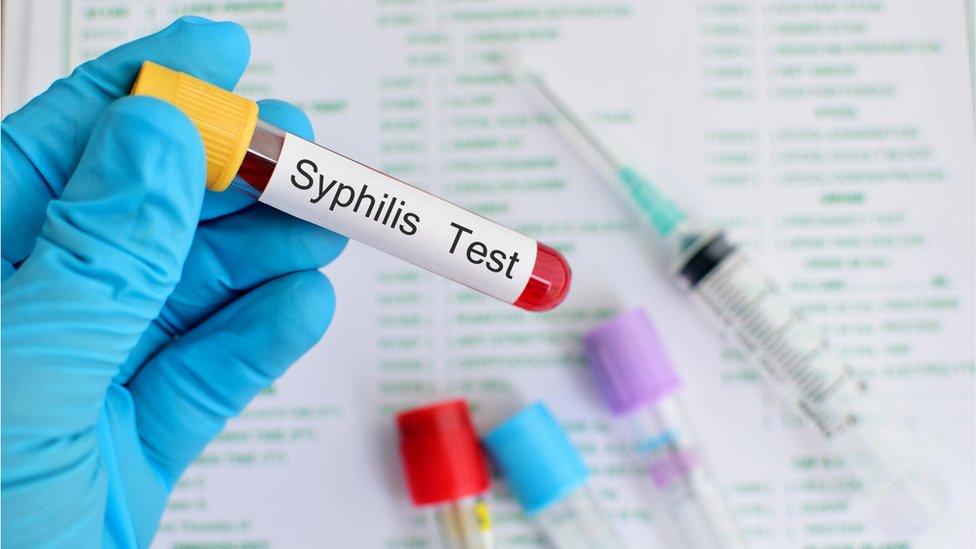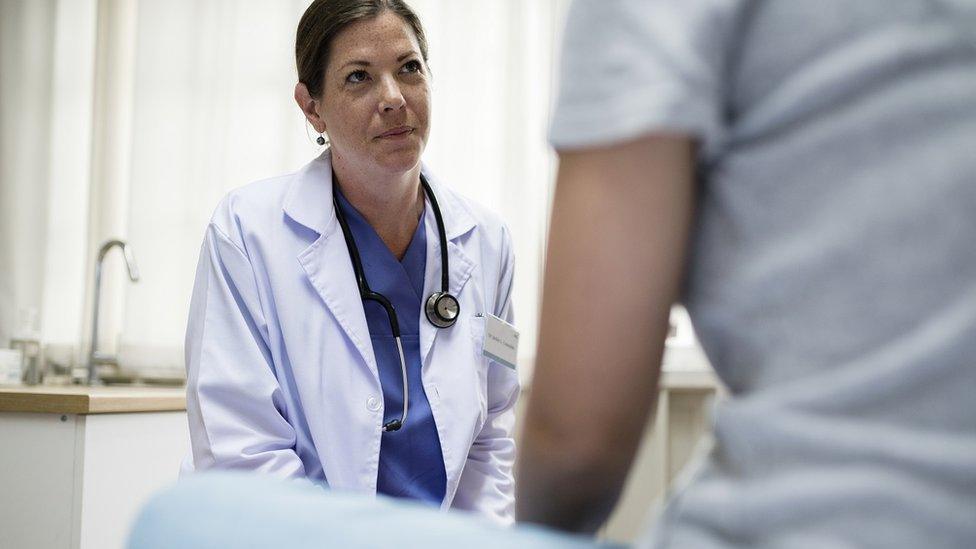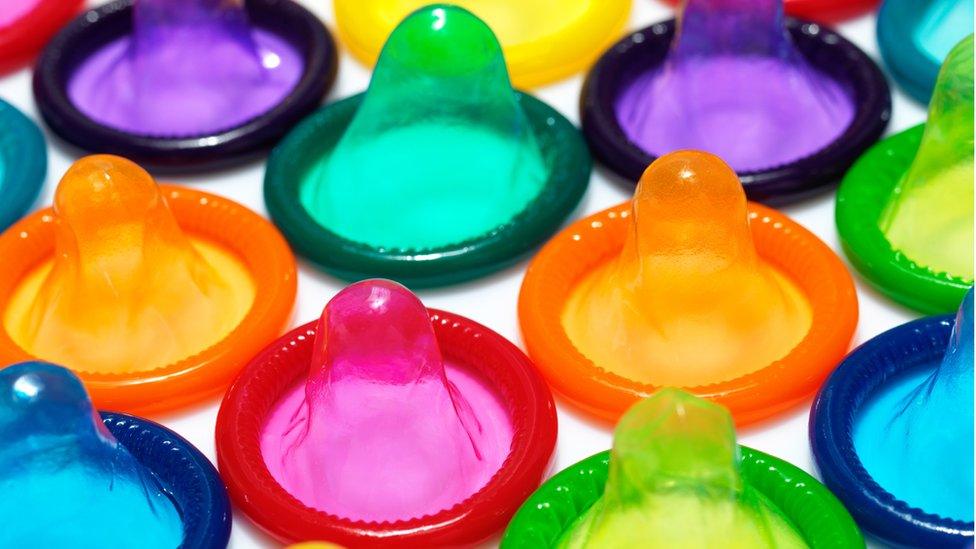Syphilis cases in Scotland reach 15-year high
- Published

There were 455 cases of syphilis diagnosed in 2018 - a rise of 14% on the previous year
The number of cases of syphilis recorded in Scotland has reached a 15-year high.
Figures released by Health Protection Scotland (HPS) found the rise was part of a general increase in all sexually transmitted infections (STIs) last year.
There were 455 diagnoses of syphilis - which can spread to the brain if left untreated - a rise of 14% in a year.
Almost all of those diagnosed with the disease were men.
The figures showed that 96% of cases of syphilis were in men - with 87% of those being found in men who had sex with other men (MSM).
'Not fully understood'
HPS said it was possible that the increase was linked to a decision to make the drug PrEP available on the NHS in Scotland to help prevent the spread of the HIV infection.
Its report said: "The impact of NHS-funded HIV pre-exposure prophylaxis (PrEP) is not yet fully understood, but it now looks possible that this intervention is associated with the observed increase in the incidence of STI diagnoses in MSM."
Separate figures showed a 24% increase in gonorrhoea last year, as well as a small rise in genital chlamydia.

There were 3,233 cases of gonorrhoea reported in 2018, according to HPS - an increase of 103% from 2013.
Over the five years, cases of gonorrhoea among men more than doubled, going from 1,056 to 2,339. Diagnoses in women went up 66% - from 538 to 893.
Meanwhile, there were 16,338 diagnoses of chlamydia in 2018, up from 15,685 the previous year.
Most at risk
HPS said that, overall, "young people, particularly women aged less than 25, were the group most at risk of being diagnosed with an STI".
The figures were published as part of a larger release of health service data, which also detailed the level of drug deaths in Scotland between 2017-18 and abortion rates over the period.
According to the statistics, 13,286 women aged 15-44 in Scotland had terminations in 2018 - representing a 10-year high in the figures.

The NHS Scotland Information Services Division report said the factors behind the increase were "not yet exactly clear".
Women aged 20-24 had the highest abortion rate, at 21.3 per 1,000, a pattern evident since 1985.
For the fifth consecutive year, girls under 16 had the lowest termination rates at 1.4 per 1,000 women.
Strict circumstances
Rates for women in the most deprived areas remained about twice as high as those from the least deprived areas at 17.8 per 1,000 women aged 15-44 compared with 8.9.
For the first time the figures included the number of women taking a drug to induce the second part of a two-stage medical abortion process in their own home.
Across Scotland, almost a third (30%) of terminations were performed in this manner.
The proportion varied widely by health board, ranging from none reported in Ayrshire and Arran, Dumfries and Galloway, Fife, Highland and Lanarkshire to 85.7% across the island health boards.
Also included in the statistics for the first time were the number of women from Northern Ireland, where abortion is illegal except in strict circumstances, accessing abortions on Scotland's NHS.
Fewer than 10 women who gave a Northern Ireland residence address in 2018 had a termination in Scotland.
- Published20 April 2018

- Published10 June 2018
